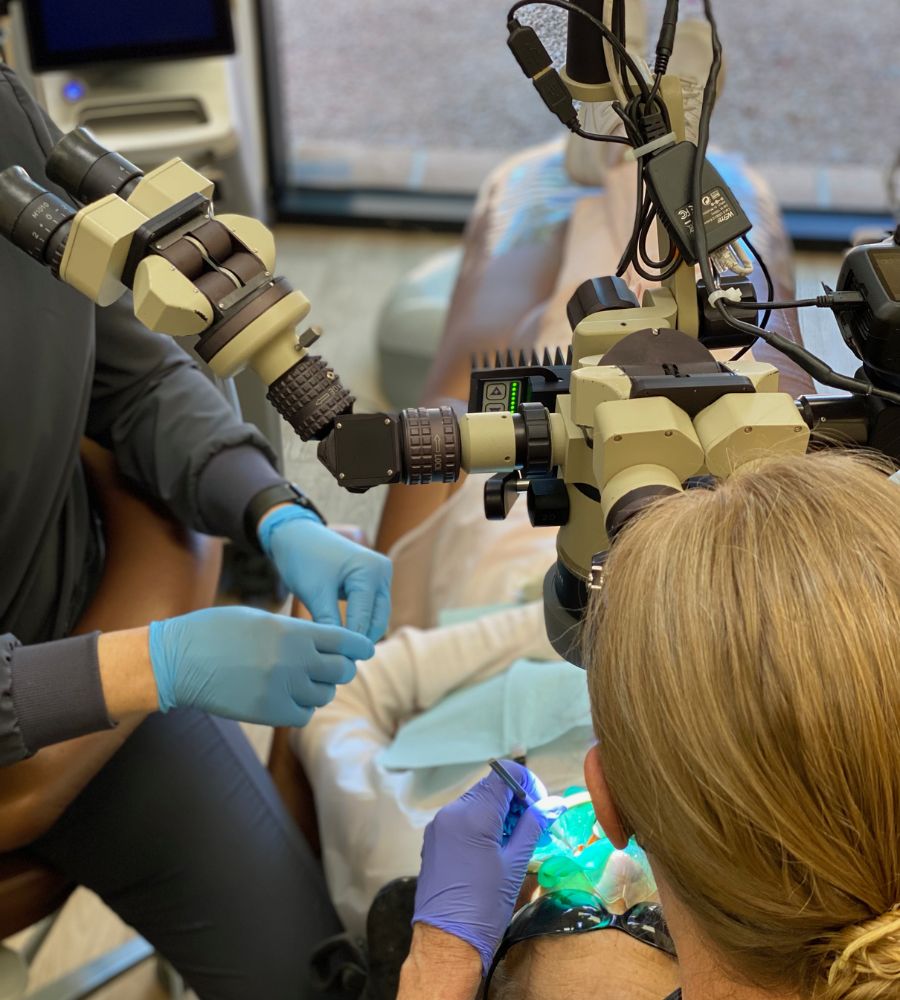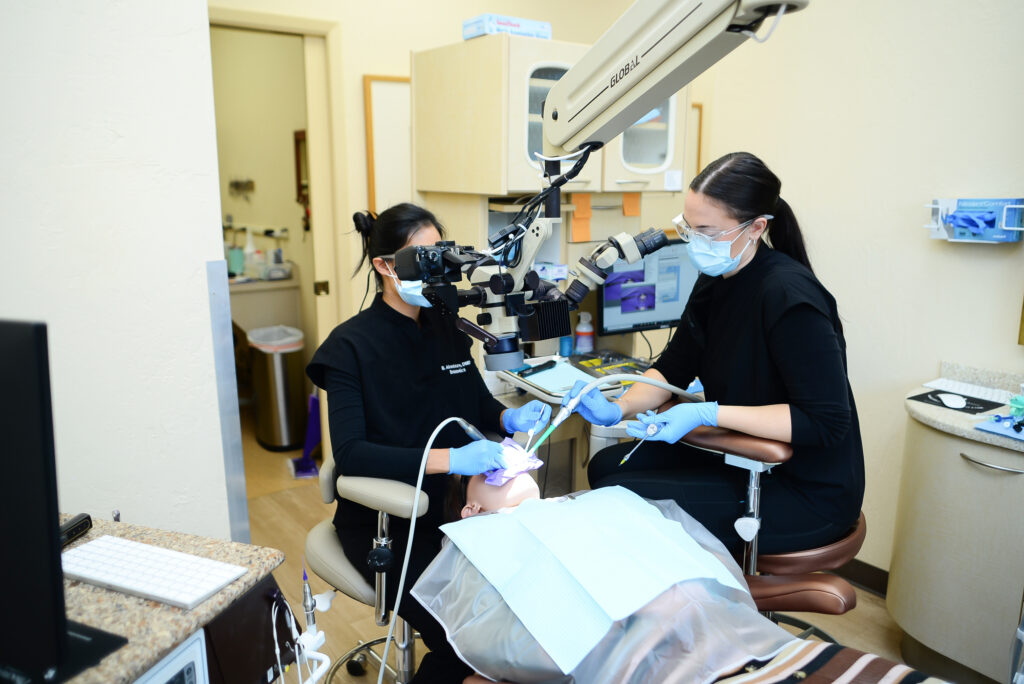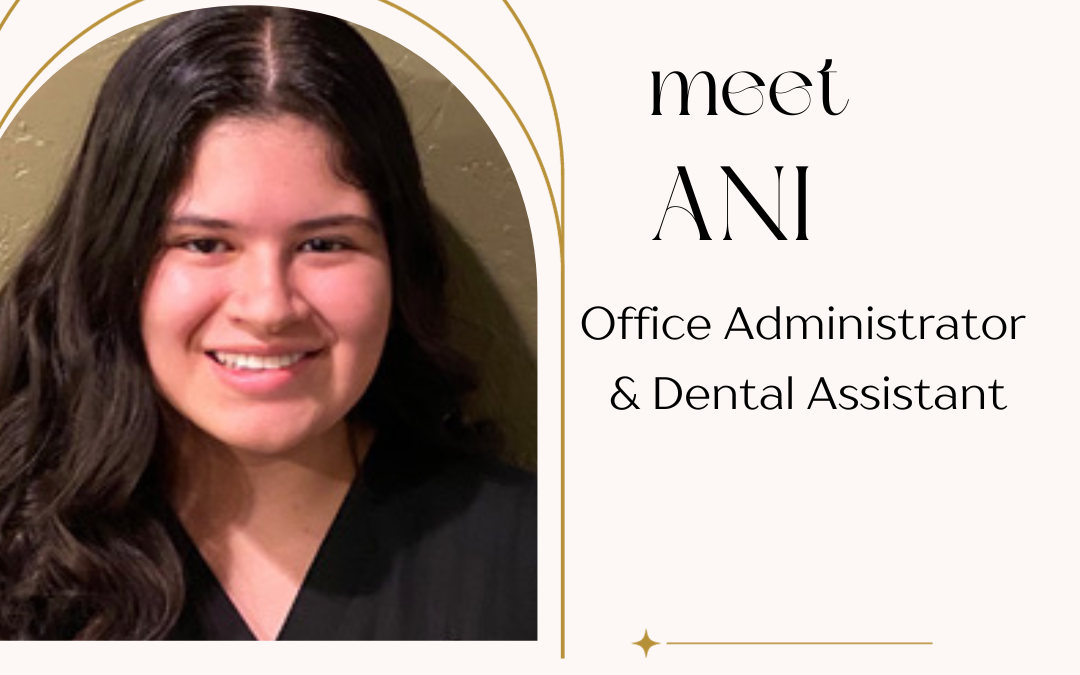
by Dr. Jacqueline S. Allen | Jul 1, 2024 | Endodontics, Endodontist
Diamonds last forever. Dental treatments may not. That does not mean the treatments are not valuable. Potentially complex  treatments, such as root canals, can be effective even if they need to be done a second time.
treatments, such as root canals, can be effective even if they need to be done a second time.
Endodontic retreatment offers another chance to natural teeth previously saved with a root canal. If a tooth treated with a root canal becomes sore or painful, even months or years later, see your endodontist immediately. They can determine if the tooth is a candidate for retreatment.
Here are answers to some frequently asked questions about endodontic retreatments, courtesy of practitioners at Phoenix Endodontic Group.
Answers To Common Endodontic Retreatment Questions
Why does my tooth need endodontic retreatment?
Reasons that your original root canal might fail include complex or very small root canals missed during the first procedure, or a delay in getting a crown restoration after your root canal. It’s also possible your tooth experienced new decay or damage, allowing infection to take hold.
Why perform the root canal procedure again if it has failed?
Here is a parallel: If you broke your arm a second time, you would still want the doctor to set the bone and put it in a cast. Endodontic retreatment, a non-surgical option, is one of three choices you may have; the other two are endodontic surgery (apicoectomy) and extraction.
What happens during endodontic retreatment?
Endodontic retreatment is similar to the original root canal procedure. The endodontist will remove your crown and disassemble any materials added to improve your tooth’s structure, such as a post and core. They will remove the current sealant material, carefully examine your tooth’s roots to locate the problem, and clean the canals with disinfecting fluids. Then, the canals will be resealed and a temporary filling placed. You will again need to have a crown placed to finalize the process.
Are endodontic retreatments usually successful?
Endodontic retreatments have a success rate approaching 90 percent. If your endodontist has concerns a retreatment may not be right for you, they may suggest an apicoectomy. In that surgical procedure, a small incision is made near the tooth root to address the infected tooth canals there.
“When we do an endodontic retreatment, we examine our patient’s tooth carefully to ensure the success of the procedure,” says Dr. Jacqueline S. Allen, who practices at the Phoenix Endodontic Group. “We’re happy to answer all your questions, so you’ll feel at ease during your retreatment.”

by Dr. Jacqueline S. Allen | Jan 23, 2024 | Blog, Endodontics, Team Spotlight
In the bustling world of endodontics, where precision and care are paramount, one individual stands out as part of the heartbeat of Phoenix Endodontic Group. Meet Vivian Dionicio, one of our practice dental Assistants, whose dedication and infectious enthusiasm make her an invaluable asset to our team. We are pleased to explore her role at Phoenix Endodontic Group and the unique qualities that define her in this Q&A.
 Full Name: Vivian Dionicio
Full Name: Vivian Dionicio
Job Title: Dental Assistant
What’s the day-to-day of your role like?: Greeting patients, assisting doctor with patients during treatment, keeping office running smoothly.
What are 3 words to describe Phoenix Endodontic Group?: Friendly, Empathetic, Sincere.
Before working at Phoenix Endodontic Group, what was the most unusual or interesting job you’ve ever had?: Licensed Esthetician.
First Job: Sonic Drive-In.
Do you have any hobbies?: Gym, Hiking, Bike Riding.
Favorite food: Chipotle.
Favorite book: The 5 Languages of Love.
Favorite movie: Selena, the movie.
Something on your bucket list: Travel to Greece, Hot Air Balloon.
Guilty pleasure: Chocolate, Frozen Yogurt

by Dr. Jacqueline S. Allen | Dec 11, 2023 | Blog, Endodontics, Team Spotlight
Learn more about our endodontic care team at Phoenix Endodontic Group in our Team Spotlight
As we embrace the festive spirit of December, we’re thrilled to shine the light on one of our exceptional endodontists at Phoenix Endodontic Group. This month, let’s get to know one of the top endodontists in our endodontic practice – Dr. James F. Wolcott, IV.
We had a Q&A with Dr. Wolcott:
Full Name:Dr. James F. Wolcott, IV
Job Title: Endodontist
Educational Background:
-
-
- Dental School: University of Colorado, Boulder, CO
- General Practice Residency (GPR): University of Tennessee, Knoxville, TN
- Endodontic Program: Einstein Medical Center, Philadelphia, PA
First job in healthcare: Orderly at a nursing home in North Carolina during my junior year of high school.
Why you became an Endodontist: I have a knack for working in my mind’s eye.
Do you have any hobbies? Karting with my son.
Hobbies: Enjoying karting adventures with my son.
Culinary Delight: Chilaquiles
Literary Favorite: Fear and Loathing in Las Vegas
Top Movie Pick: The Good, The Bad and The Ugly
Guilty Pleasure: Indulging in the nostalgia of 80’s hair metal music.

by Dr. Jacqueline S. Allen | Dec 4, 2023 | Blog, Endodontics, Endodontist, Root Canal

Root canal treatment of a damaged or infected natural tooth can enable it to last a lifetime. However, like most treatments, you as the patient must do your part to ensure your procedure is successful.
Proper root canal treatment aftercare can be divided into things you should do immediately after the procedure, during recovery week, and things you should do over the long run. Let’s take a look at each set of instructions so you’ll be well prepared when you have your root canal treatment.
Aftercare Tips: Immediately After Your Root Canal Treatment
Do not eat for several hours after your root canal. This allows the local anesthesia to wear off – you will avoid biting injuries due to numbness.
Do not smoke after your root canal treatment. Smoking tobacco impedes healing.
Make sure you have antibiotics prescribed by your endodontist. This allows you to continue to fight any infection in your tooth.
Keep the endodontist’s contact information handy in case there is post-procedure pain. You should NOT have excruciating pain after a root canal – if you do, call the office so they can look into what is happening.
Aftercare Tips: The Week After Your Root Canal Treatment
Do not bite down using the tooth that received the root canal. Until you’ve had a permanent restoration (usually a crown) placed, you could lose your temporary filling by putting biting pressure on the tooth.
Stick to soft foods while your mouth is healing. You can choose from delicious options that include scrambled eggs, smoothies, yogurt, pasta, noodle dishes, mashed potatoes, meatloaf, hummus, cooked vegetables, or sorbets.
Ease back into your regular activities. You can go to work in a day or two, and start exercising a few days after that. When in doubt, don’t push things; let your body guide recovery.
Aftercare Tips: When Your Root Canal Treatment Is Finished
Make sure you get the permanent restoration (usually a crown) placed over your root canal. This one step is critical to protecting the root canal and cannot be skipped.
Continue to brush and floss daily. You can care for your tooth that received the root canal as you would any natural tooth after the healing stage is complete.
Visit your general dentist regularly. They will monitor your overall oral health and can refer you to an endodontist if you need another root canal or a root canal retreatment.
“Most of the steps that we ask our patients to take after a root canal treatment are simple, but they should be followed closely,” says Dr. Jacqueline S. Allen, who practices with Phoenix Endodontics Group. “We are happy to discuss how to follow aftercare instructions and why they are important.”

by Dr. Jacqueline S. Allen | Nov 19, 2023 | Blog, Endodontics, Team Spotlight
Learn more about our endodontic care team at Phoenix Endodontic Group in our Team Spotlight.

Our November Team Spotlight features office administrator and dental assistant, Ana-Alicia Salas. Ani manages both administrative tasks in our endodontic practice and assists the doctors with endodontic procedures. She is a valued team member at Phoenix Endodontic Group and we are thrilled share a little more about Ani.
We had a Q&A with Ani:
Full Name: Ana-Alicia Salas
Job Title: Office Administrator/Dental Assistant
What’s the day-to-day of your role like?: ? Following up with our referring offices to ensure we are providing the best service to both their office and patients.
What are 3 words to describe Phoenix Endodontic Group?: Committed, Friendly, Attentive.
Before working at Phoenix Endodontic Group, what was the most unusual or interesting job you’ve ever had?: I’ve always worked at Phoenix Endodontic Group
First Job: Phoenix Endodontic Group
Do you have any hobbies?: Reading, shopping and playing with my nephew.
Favorite food: Pizza
Pet(s): Boxer: Banner; Mixed Terrier: Coco
Favorite book: The Summer I Turned Pretty
Favorite movie: Love Rosie
Something on your bucket list: Going to Rome
Guilty pleasure: People Watching

by Dr. Jacqueline S. Allen | Nov 3, 2023 | Blog, Endodontics, Endodontist, Root Canal

When times are tough, folks yearn for the “good old days.” However, most of us wouldn’t really want to travel back in time for complex dental work. For endodontic procedures such as root canal therapy, patient outcomes and happiness have improved immensely, on the heels of improvements in technology and treatment techniques.
Here’s a brief list of just some ways root canal therapy has gotten better over recent generations.
Advancements In Root Canal Therapy
1. Diagnostic imaging, for better treatment. When root canals were first performed, dentists didn’t have even basic imaging technology to guide their work. Today, treatments can be pinpointed with Cone Beam Computed Tomography, allowing endodontists a full 3-D view of your teeth.
2. Local anesthetics allow a comfortable treatment. The earliest root canal treatments happened before the advent of anesthesia. Today’s patients have largely pain-free experiences through local anesthetics. Further, if dental anxiety is an issue, sedation dentistry can provide a gentle solution.
3. Microsurgical tools allow precision canal cleaning and shaping. The first root-canal shaping tool was developed by Edwin Maynard in the mid-1800s, created from a watch spring. Today’s precise tools for cleaning and shaping infected root canals are developed task-specifically, continually refined, and always crafted with your teeth in mind.
4. New cleansing technologies ensure more complete treatment. Top endodontic practices now use the GentleWave Procedure, a root canal treatment that uses fluid dynamics to ensure superior canal cleaning. The result is a faster, less invasive root canal with minimal pain and rapid healing.
5. Restorations ensure root canal treatments remain successful. Early root canal treatments were not followed by the placement of restorations such as a permanent crown. This critical step has hugely enhanced the long-term success rate of root canals, allowing a properly cared for root canal treatment to often last a lifetime.
At Phoenix Endodontic Group, practitioners use all our available advances to provide state-of-the-art treatment.
“When you enter one of our treatment rooms, every aspect of your root canal treatment has been evaluated and selected to provide you with the safest, most comfortable treatment possible. Our goal is preserving your natural teeth, so you can enjoy them for a lifetime,” says Dr. Jacqueline S. Allen, founder of the practice.

 treatments, such as root canals, can be effective even if they need to be done a second time.
treatments, such as root canals, can be effective even if they need to be done a second time.

 Full Name: Vivian Dionicio
Full Name: Vivian Dionicio





